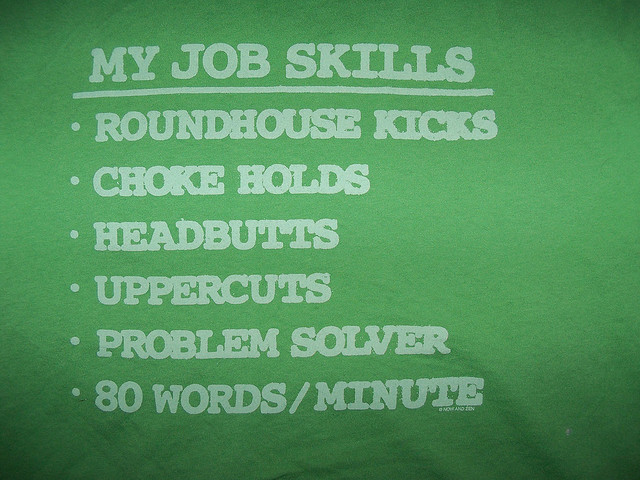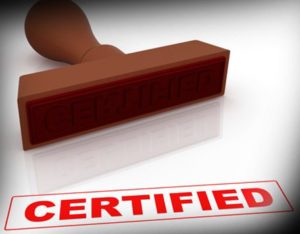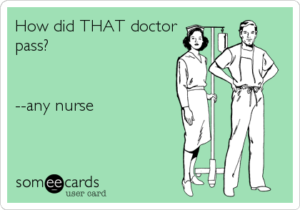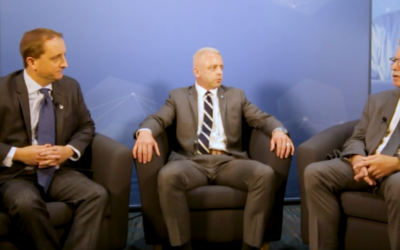DABNM Written Exam = CNIM Exam?
Like most areas of healthcare, IOM practitioners are divided into classes due to credentials. One thing that’s a little weird about IOM is the fact that the CNIM exam and the DABNM exam (written portion) seem to cover a lot of the same ground. For those considering IOM as a career, let me give you a quick synopsis of how most progress in our field.
In the world of intraoperative monitoring, there’re 3 main hurdles to overcome.
First IONM Hurdle – Find that initial IOM job.
IONM Companies hate hiring people who need to be trained. It takes 6 months to a year to do so, and then the people are free to jump ship to another company (although some are making changes to their contracts that will make this a little more difficult). As a result, getting that first neuromonitoring job can be tough. But there are some things you can do to land your first neuromonitoring job without the experience.
Second IONM Hurdle – Pass the CNIM examination.
Once you get your foot in the door with a company or in-house program to get your operating room requirements done, it’s time to take a little written test. As some will attest (really more than half the people taking it, but more on that later), passing the CNIM on the first try can be a PITA. But once you have it, you’re in a MUCH more secure position in this field.
Now, discussions continue about what new level of credentialing and school should be implemented. And what the CNIM was, is, and will be, seems to be up for discussion as well. It used to be something nice to have, but not really necessary. Then it started becoming the standard for surgical neurophysiologists, and some hospitals started to require all people in their OR working as the primary clinician to hold the certification. Should it ever get to the point where all facilities require it, this very difficult examination becomes the minimum level of acceptable certification (we’re not there yet, but this is an important step if things stay the way they are now. This is something I would hope all surgical facilities consider, unless in an underpopulated area). Some have speculated that it might eventually be replaced, or at least go through another change in its role, as colleges pump out neuromonitoring graduates. Too early to tell if that will take off to meet the needs of supply.
Third IONM Hurdle – Pass the DABNM examinations
This one is for doctors only. In order to get this, you have to pass a written and oral examination (not so tough, right?). The D.ABNM is as high as your official credentials can go in the IOM field. As of the time of this writing, there is only about 150 total vs 4000 CNIM. As in… the world. What having the DABNM credentials means is also something that has no concrete definition. The initial intent was to create more qualified oversight, but that is not how things worked out. Only having 150 DABNMs total is 1 major reason from both a service provider and political standpoint.
So if the initial intent of holding the DABNM has fallen short, should you even go through the hassle and expense to obtain it? For me, it is a no-brainer. Having the DABNM has allowed me conversations I probably wouldn’t have had without it. But you need to produce the goods once you’re having those conversations because the DABNM does not guarantee extra value to you. It’s not like having the DABNM enables you to bill other codes at a higher RVU, which would automatically increase your value. You need to make it work for you.
CNIM exam vs DABNM exam
So what’s the difference between the written portion of the DABNM and the CNIM certification test?
The short answer is… not much. As a matter of fact, I didn’t study differently for either of these exams.
Here’s The Most Common Advice…
There just “might” be a slight tilt of the DABNM examination to more doctor level, or questions appropriate to the job description of a remote oversight neurologist, compared to technical questions more in line with the job description of a surgical neurophysiologist.
So if the CNIM exam “might” cover a little more on the technical parts of IOM, while the DABNM exam “might” test a little more on the interpretive parts of IOM, how would that really change how you go about studying for the DABNM vs CNIM?* For me, it meant no difference, and that’s how I would recommend everyone approach those exams. The minor, almost unnoticeable difference if I wasn’t looking for it, wasn’t enough to justify concentrating on one area more than another. The Nernst equation (technical line of questioning) reared its ugly little head on both of my exams, as did questions in regards to decreasing SSEP amplitudes (professional, interpretation line of questioning).
You still have to prepare for all of it.
The second most common advice I’ve heard others say is that you don’t need to really know less commonly used modalities like TCD, VEPs, or DBS for the CNIM, but you do for the DABNM. If they were trying to split questions more technical vs professional oversight, then they could still create questions off these modalities. I could easily see a technical question, like “what’s the most common probe used to insonate the MCA using the TCD” making it on the CNIM, while “a 65% decrease in blood flow velocity of the MCA during a CEA means?”
Could The DABNM Written Portion Be Easier Than The CNIM?
I’ve had this talk with a couple of people that took the DABNM not too long after the CNIM. Some feel it was an easier test overall, and even scored higher on it. I have no idea what the actual scores of doctors taking both exams are. I have to believe that they found it easier just due to the fact that they have been in the field a little bit longer and already went through the CNIM preparation and examination.
My Advice For Those Taking The CNIM Or DABNM
There’s a large test bank from which they pull their questions, and it gets updated from time to time. So don’t get caught following advice that would be pretty hard to substantiate. Spend your time studying smart and understanding the practice and utilization of neuromonitoring in general. You’ll be better no matter what your role. If it’s less than 3 months till your exam, it’s crunch time. You should have gathered all your material, read all your books, and commence memorizing material. If you procrastinated a little, you might want to consider picking up a study guide to pass the CNIM exam or the DABNM exam.
For those of you that have taken both exams, do you agree/disagree? What did I miss?
* – Please note that everything here was about the DABNM written examination, and not at all about the DABNM oral boards. That is a completely different animal.
Keep Learning
Here are some related guides and posts that you might enjoy next.
How To Have Deep Dive Neuromonitoring Conversations That Pays Off…
How To Have A Neuromonitoring Discussion One of the reasons for starting this website was to make sure I was part of the neuromonitoring conversation. It was a decision I made early in my career... and I'm glad I did. Hearing the different perspectives and experiences...
Intraoperative EMG: Referential or Bipolar?
Recording Electrodes For EMG in the Operating Room: Referential or Bipolar? If your IONM manager walked into the OR in the middle of your case, took a look at your intraoperative EMG traces and started questioning your setup, could you defend yourself? I try to do...
BAER During MVD Surgery: A New Protocol?
BAER (Brainstem Auditory Evoked Potentials) During Microvascular Decompression Surgery You might remember when I was complaining about using ABR in the operating room and how to adjust the click polarity to help obtain a more reliable BAER. But my first gripe, having...
Bye-Bye Neuromonitoring Forum
Goodbye To The Neuromonitoring Forum One area of the website that I thought had the most potential to be an asset for the IONM community was the neuromonitoring forum. But it has been several months now and it is still a complete ghost town. I'm honestly not too...
EMG Nerve Monitoring During Minimally Invasive Fusion of the Sacroiliac Joint
Minimally Invasive Fusion of the Sacroiliac Joint Using EMG Nerve Monitoring EMG nerve monitoring in lumbar surgery makes up a large percentage of cases monitored every year. Using EMG nerve monitoring during SI joint fusions seems to be less utilized, even though the...
Physical Exam Scope Of Practice For The Surgical Neurophysiologist
SNP's Performing A Physical Exam: Who Should Do It And Who Shouldn't... Before any case is monitored, all pertinent patient history, signs, symptoms, physical exam findings and diagnostics should be gathered, documented and relayed to any oversight physician that may...










